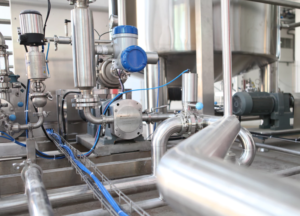
What Is An Industrial Damper? A Complete Guide
Industrial dampers modulate, divert, isolate, and shut off airflow or gas in a process system or enclosed space, usually at lower pressures with temperatures that can be as high as 2100 degrees Fahrenheit.
Download our BrochureKelair Dampers Brochure


What is a damper? Dampers serve numerous purposes in industrial settings. Discover the different types of dampers available with Kelair.
Industrial dampers , at their most basic, are used to control air flow in low pressure environments. Dampers can be part of a larger system for air pollution control or simply used for industrial ventilation.
They are essential across the many industries served by Kelair, including power generation, where they regulate combustion processes; manufacturing, where they ensure air quality management; and HVAC systems, where they maintain precise temperature control. Their versatility and reliability make them critical in environments that demand high performance and precision.
Industrial dampers regulate processed air in corrosive, high heat, particulate dense, or clean air environments. Inlet Vane Dampers or Radial Vane Dampers work together with fans or blowers to make them more efficient.
Lighter duty dampers, such as butterfly Dampers, are used in a variety of situations in combination with ducting where low leakage, flow control or a combination of the two are appropriate. Applications for Kelair heavy duty dampers typically include: isolation, by-pass, fan airflow control, shut-off and pressure relief.
At Kelair , we will custom engineer and manufacture the industrial damper that will best fit your needs. We are small enough to provide immediate assistance and large enough to provide complex solutions. Our commitment to innovation means we stay at the forefront of emerging trends in damper technology.
These innovations ensure our dampers not only meet but exceed current industry standards, providing reliable solutions for even the most complex applications.
Below are some definitions of common Damper parts and phrases:
- Actuator: a device used to operate an industrial damper in a control system.
- Damper Seals: construction features used to minimize the leakage through a damper
- Damper: a device used to regulate the flow of air in a system by modulating or two-position control.
- Drive Blade: a damper blade that is driven directly by and actuator or by a linkage, axel or jackshaft connected to the drive blade in an adjacent damper section
- Ideal Damper System: a system with a linear relationship between the percent open damper position and the percent of full airflow.
- Leakage: the amount of air passing through a damper with a given pressure drop and a given torque holding the damper closed.
- Opposed Blade Damper: a damper constructed so adjacent blades rotate opposite to each other
- Parallel Blade Damper: a damper constructed so each blade rotates in the same direction as the blade next to it.



